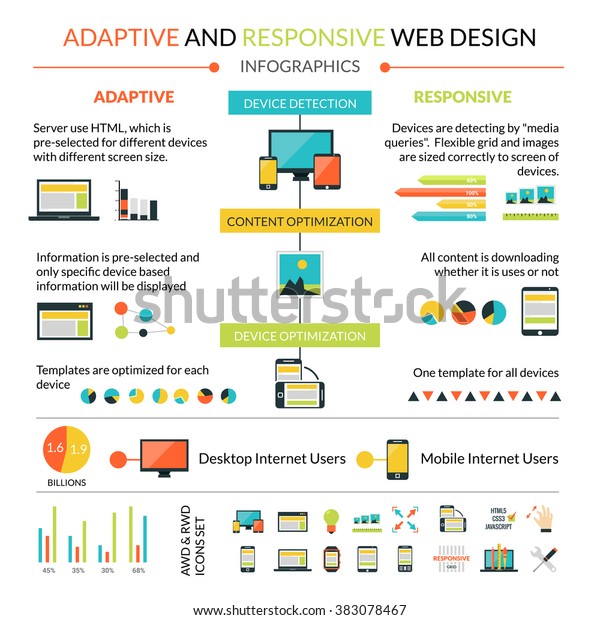The Makeover Of Online Operatings Systems: A Trip Through Time
The Makeover Of Online Operatings Systems: A Trip Through Time
Blog Article
Write-Up Composed By-Carstens Dodson
In the past, websites were straightforward and focused on info. Navigating was straight, and design was for desktop computers. Now, individual experience is vital. Information guides styles for simple navigation. Receptive layouts fit different devices. Today, dark mode minimizes stress, and minimalist menus improve navigating. Interactive attributes involve individuals, and vibrant visuals attract attention. https://franciscoupjcx.dgbloggers.com/30248208/desire-to-escalate-your-brand-name-s-on-the-internet-existence-discover-the-secret-to-electronic-marketing-success-with-specialist-services-that-will-change-your-business . See how https://www.forbes.com/sites/forbesagencycouncil/2021/04/15/five-ways-to-optimize-your-digital-marketing-strategy/ has actually advanced to enhance your on the internet trip.
Very Early Days of Website Design
In the very early days of web design, simpleness reigned supreme. Sites were fundamental, with limited shades, font styles, and formats. The focus got on providing info as opposed to flashy visuals. Users accessed the net with sluggish dial-up connections, so rate and capability were crucial.
Navigating food selections were straightforward, normally located at the top or side of the web page. Websites were designed for desktop, as mobile surfing had not been yet common. Material was king, and developers focused on simple readability over intricate style elements.
HTML was the primary coding language used, and designers needed to function within its restrictions. Animations and interactive functions were minimal contrasted to today's standards. Sites were fixed, with little dynamic web content or customized individual experiences.
Rise of User-Focused Style
With the development of website design, a shift in the direction of user-focused style principles has become significantly popular. Today, producing sites that focus on customer experience is crucial for engaging site visitors and achieving service objectives. User-focused design involves comprehending the demands, preferences, and behaviors of your target audience to tailor the web site's layout, material, and includes accordingly.
Designers currently carry out extensive study, such as individual studies and usability screening, to collect understandings and feedback directly from users. This data-driven approach helps in creating instinctive navigation, clear calls-to-action, and aesthetically enticing user interfaces that resonate with visitors. By https://wordpressseoplugins95173.blogsmine.com/30331270/carefully-select-an-electronic-advertising-and-marketing-agency-for-your-business-by-considering-your-purposes-funds-and-expertise-in-your-market-find-out-more-to-accomplish-success at the center of the design process, internet sites can supply a much more tailored and satisfying experience.
Responsive style has additionally become a key element of user-focused style, guaranteeing that web sites are maximized for different tools and screen sizes. This versatility enhances availability and functionality, catering to the varied methods individuals communicate with websites today. Fundamentally, the increase of user-focused style symbolizes a shift towards creating electronic experiences that prioritize the requirements and expectations of the end customer.
Modern Trends in Website Design
Explore the most up to date fads shaping website design today. One famous fad is dark setting design, offering a streamlined and modern-day appearance while lowering eye pressure in low-light atmospheres. Another key trend is minimalist navigating, streamlining food selections and boosting user experience by focusing on essential elements. Integrating micro-interactions, such as computer animated buttons or scrolling results, can produce a much more engaging and interactive site. Receptive layout continues to be crucial, guaranteeing seamless user experiences across various devices. Furthermore, making use of vibrant typography and unbalanced layouts can add visual passion and draw attention to particular web content.
Incorporating AI innovation, like chatbots for customer support or individualized suggestions, boosts customer engagement and enhances procedures. Access has likewise become a substantial trend, with designers prioritizing comprehensive layout methods to accommodate varied customer demands. Welcoming sustainability by optimizing site performance for rate and performance is an additional arising fad in website design. Collaborating with individual feedback and information analytics to iterate and improve style continuously is crucial for remaining relevant in the ever-evolving electronic landscape. By accepting these modern-day trends, you can develop an aesthetically attractive, straightforward internet site that resonates with your audience.
Final thought
As you assess the advancement of site layout from the very early days to now, you can see how user-focused layout has ended up being the driving force behind contemporary trends.
Accept the journey of adjustment and adaptation in website design, always keeping the user experience at the center.
Stay present with the current patterns and technologies, and never stop evolving your approach to develop aesthetically sensational and straightforward internet sites.
Develop, adjust, and create - the future of website design remains in your hands.
